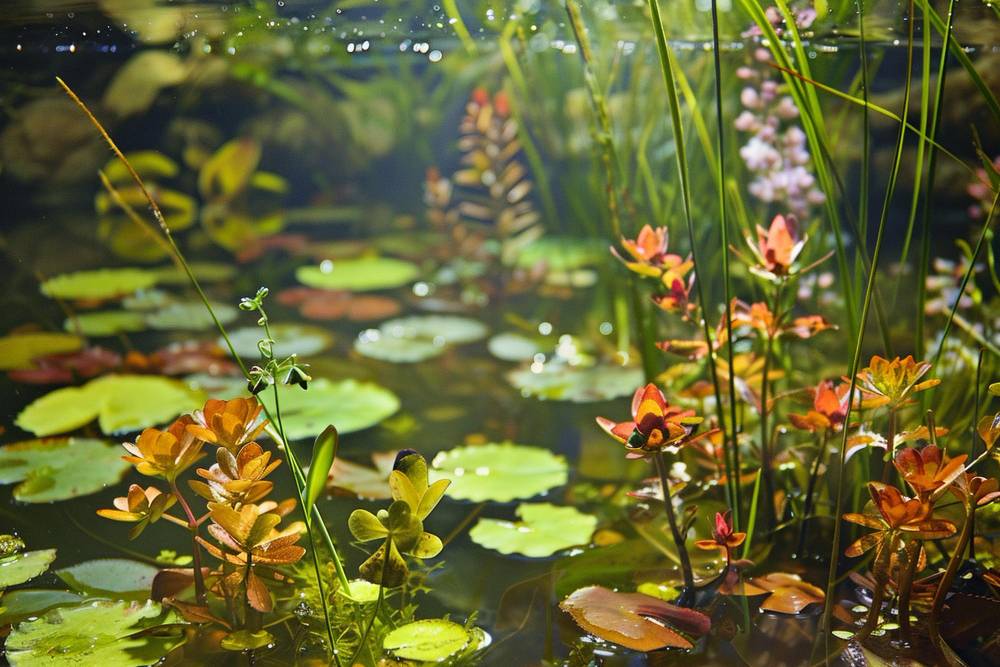
There are countless pond plants that can either beautify or wreak havoc on your water body, and understanding when these plants start growing is essential for maintaining the property. Since a comprehensive list would be too long to enjoy reading, this article brought to you by Aquatic Restoration will focus on pond plants common in the Southeast USA region.
If you are looking for professional lake and pond maintenance services, then consider the specialists with nearly 40 years of industry experience. Contact Aquatic Restoration to get started with a consultation. Our team is on standby to take your call or message today.
Emergent plants are those that root in the bottom of the pond and grow up through the water, with their stems, leaves, and flowers often extending above the water’s surface. These plants are among the first to start growing as the weather warms up in the Southeast.
Submerged plants grow entirely underwater and are essential for aerating the water and providing shelter for fish. These plants usually start growing a little later than emergent plants because they rely on warmer water temperatures to kickstart their growth.
Floating plants are those that float on the water’s surface, with their roots hanging down into the water. These plants can start growing in spring and continue to thrive throughout the warmer months.

Understanding the growth cycles of pond plants is crucial for effective detention and retention pond maintenance. For pond owners who find it challenging to keep up with the growth and management of aquatic plants, Aquatic Restoration is here with affordable and reliable service.
We are an established company with decades of industry experience, and our team is happy to take your call or message today. Let’s get started with a consultation as soon as possible.
Lakes are vital ecosystems that support wildlife, protect water quality, and enhance the quality of life for surrounding communities. Whether…
If you’re reading this, there’s a good chance you’re sick and tired of dealing with aquatic weeds that never…
Lake management is an integral part of keeping lakes healthy, functional, and beautiful for generations to come. Not only…
When people think of lake management, they often picture large-scale restoration projects involving acres of water and heavy…
Is your once beautiful and sparkling lake looking murky? Does excessive algae or scum on the surface turn it into…